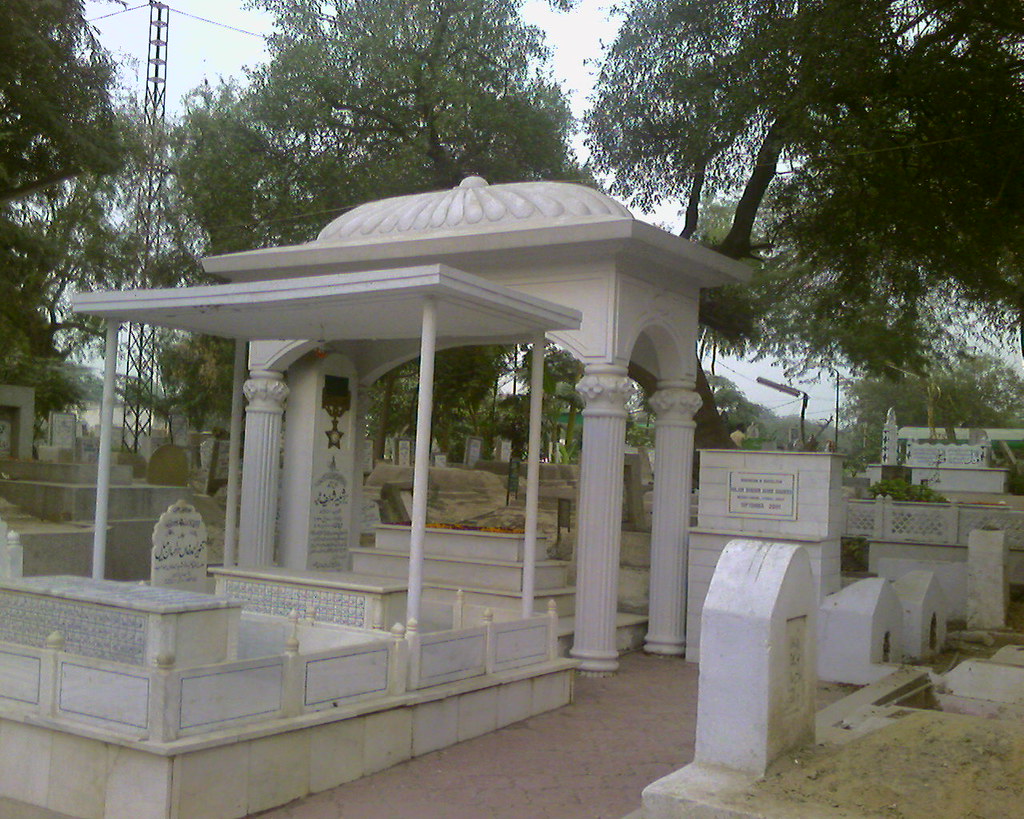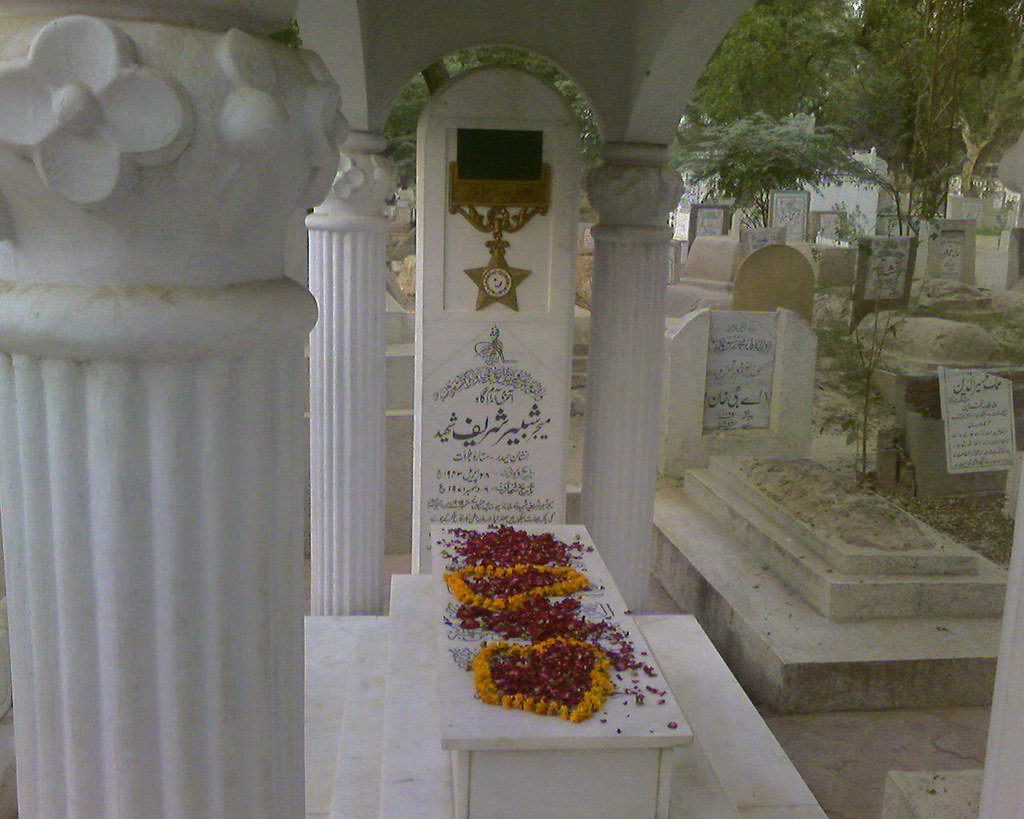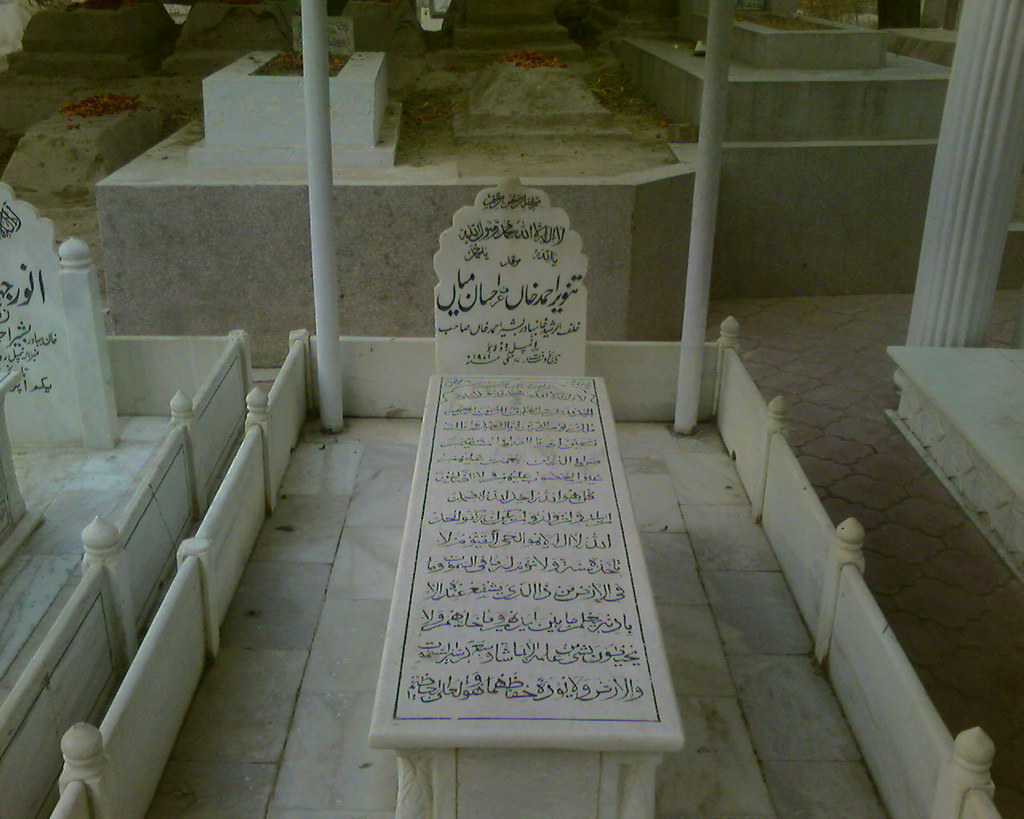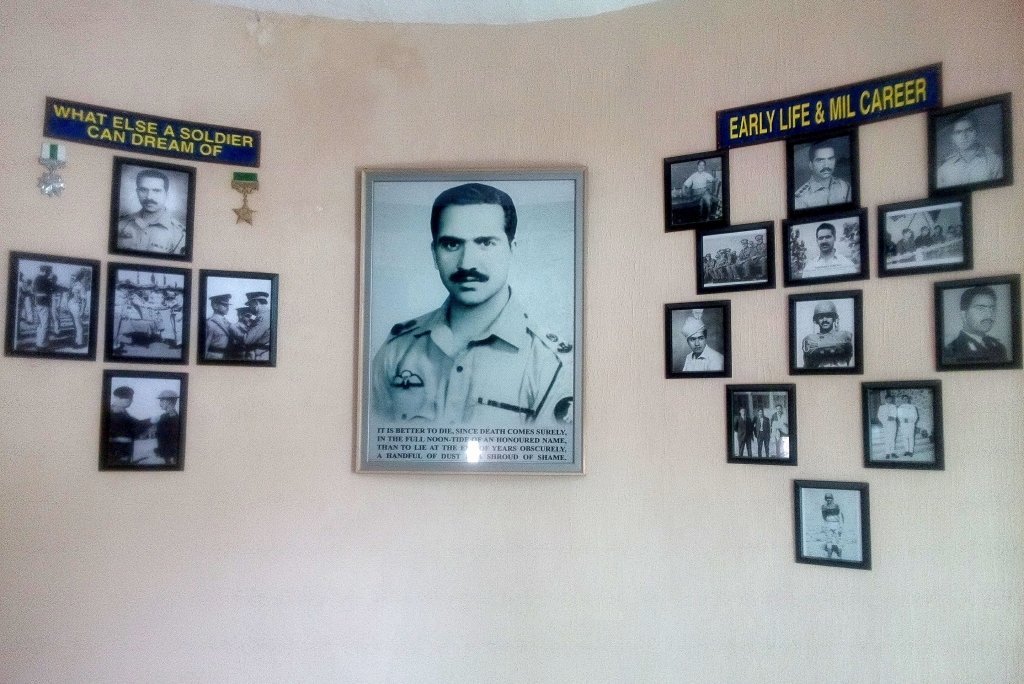muhammadhafeezmalik
SENIOR MEMBER

- Joined
- Jan 21, 2015
- Messages
- 5,414
- Reaction score
- -17
- Country
- Location
دنیا میں زندگی کا نہیں اعتبار کچھ
رہتی ہے اس چمن میں ہمیشہ بہار کچھ
انساں کو فکر چاہیے ہر دم کمال کی
کسبِ کمال کن کہ عزیزِ جہاں شوی
رہتی ہے اس چمن میں ہمیشہ بہار کچھ
انساں کو فکر چاہیے ہر دم کمال کی
کسبِ کمال کن کہ عزیزِ جہاں شوی
It is better to die, since death comes surely,
in the full-noon tide of an honoured name,
than to lie at the end of years obscurely,
a handful of dust in a shroud of shame
I stood there, absorbed into that solemn portrait, spellbound by the magnetic stare of his eyes. The above said words, right underneath the photograph were being engraved on my heart and in my subconscious I was long lost deciphering the riddle that has perplexed the human kind for long, when to live and when to die and what to die for! Was it for these words or was there something in the eyes that got hold of me that afternoon in an isolated observation tower at Sulemanki, I don’t vividly recall. But, wait… dear reader… it was in the eyes, definitely it was!
Sometime back I had read his mother’s interview who remembered her martyred son with a glee that is a pure product of pride and perseverance. Rashid Wali Janjua interviewed “Ammi Jee” and quoted her saying “Sometimes I wonder what motivated him to approach death with such alacrity. My son always had a premonition where he was headed and he wanted to meet his creator in his best uniform. It was not for nothing that he daily pestered his batman to lay out four fully starched uniforms to choose for wearing. I have a picture of him in my home where I visit him daily after my morning prayers. Sometimes when I pine too deeply for him, he comes in my dream gesturing that he has acknowledged my feelings.”
Years from now, and quite a handful of them, I stood in all humility at the Miani Sahib Graveyard in Lahore at the resting abode of the most decorated soldier in the history of Pakistan Army who was sleeping there as per his wish to be buried alongside his best friend. Shabbir had wished to be laid beside Tanveer, a childhood friend who had died young. Tanveer’s mother would see him in pain in her dreams and had borrowed this idea of having a saint, a righteous man or a martyr to be buried by her son’s side. Shabbir had told his sister that if ever he got bestowed upon by the elevation of being a martyr he should be buried next to Tanveer at Miani Sahib. Sometimes I feel he might have embraced shahadat for the sake of friendship.
 Graves of Major Shabbir and his friend Tanveer, side by side
Graves of Major Shabbir and his friend Tanveer, side by side Grave of Major Shabbir Sharif Shaheed
Grave of Major Shabbir Sharif Shaheed Tanveer Ahmed Khan, Major Shabbir Sharif’s friend
Tanveer Ahmed Khan, Major Shabbir Sharif’s friend Gravestone, Major Shabbir Sharif, Nishan e Haider
Gravestone, Major Shabbir Sharif, Nishan e Haider
This is what he was; a charismatic persona, an ardour human being, a brave son, a best friend and above all a martyr of the motherland. Winner of the Sword of Honour in Pakistan Military Academy, Sitara e Jurrat for valour in 1965 Indo-Pak war and Nishan e Haider for the supreme sacrifice in the 1971 war, what else a soldier could ask for. In many ways I am impressed with Maj Shabbir Sharif Shaheed and it was with this devotion that I headed to Sulemanki Border Post to pay homage to the martyrdom of the great soldier and to have a look across the border on the distant battlefield where Maj Shabbir Sharif with his company had dashed into the enemy territory and captured the Sabuna Bund with iconic Beriwala Bridge. The terrain, where he along with his troops stood as a rock and had repulsed numerous counter attacks adding up to the death toll and the misery of enemy battalions. A battlefield where he had embraced shahadat and was posthumously awarded Nishan e Haider, the highest award for gallantry in Armed Forces of Pakistan.
Sulemanki Headworks were very much on the visit list as I left Mandi Sadiq Ganj for Lahore that morning. After a quick stop at Macleod Ganj as I headed towards Sulemanki, it wasn’t only the head-works but something beyond that towards the Indo-Pak border. Time of the visit was carefully planned around noon well before the time of the daily flag lowering ceremony. I wanted to avoid the crowd and have those peaceful moments of solitude all to myself. The other objective was to secure a time and place at the observation tower for an opportunity to view the area of operation of Bravo Company ex 6 Frontier Force in 1971 and if luck, weather and binoculars favoured, to seize a sight at the far-off Sabuna DCB and the Beriwala Bridge. I was received by the smartly dressed soldiers of the Sind Regiment posted for the border duties and was escorted to the Rangers Border Post. It had rained the previous night and the left bund leading towards the post was all slush and mud. For a moment, I had hesitated to drive further on the Honda City Hyper 16 Valve engine, but the car did remarkably well. We negotiated the soft obstacle and arrived at the border post where an equally smart and well-dressed Rangers Inspector welcomed us. After the exchange of pleasantries and a swift briefing on the border post layout, I requested for a visit up on the observation tower and was aptly guided. Inside the tower a spiral staircase leads up to the top and three platforms in between the incline have been setup as photo galleries. It was on the first platform that I came across the gallery dedicated to Major Shabbir Sharif Shaheed NH, the hero of Sulemanki-Fazilka sector from 1971 Indo-Pak War.
Map : Sulemanki – Fazilka
Sulemanki – Fazilka sector had seen Pakistani forces successfully infiltrating and capturing significant piece of land both in 1965 and 1971 wars. The Indian side resorted to defence based on strong points at the important communications centers leaving covering troops ahead to impose a delay on advancing Pakistani forces. In December of 1971, it was 6 Frontier Force along with 7 Punjab, 18 Baloch (later 3 Sind) and Pakistan Rangers who were to perform some heroic tasks in capturing the enemy territory and inflicting heavy losses while repulsing numerous counter attack attempts. Maj Shabbir Sharif was commanding the Bravo Company of 6 FF, who with his initiative and ingenuity was to capture the Ditch Cum Bund (DCB) on Sabuna Distributary with all important Beriwala Bridge intact. Brigadier (Retd) Farooq Afzal was a 2nd Lieut and a Company Officer in Bravo Company 6 FF commanded by Maj Shabbir in 1971. In his memoirs, the officer has given an in-depth account of the war actions where he himself displayed great courage while serving under command of a gallant officer. While in battle locations at Sulemanki Headworks, Major Shabbir while utilizing the high and firm ground on the left marginal bund established a ‘machan’ on a tall shisham tree, an intelligently indigenous observation tower to keep an eye on enemy. This provided an up to date information on enemy locations till the very time the company prepared to launch the assault. The mission of Bravo Company was to clear enemy Jhangar Post and Capture Sabuna DCB and village Noor Muhammad for what the operation commenced on the evening of 3rd Dec 1971. It was Maj Shabbir’s remarkable planning to send out a fighting patrol of 14 best soldiers of the company ahead of the attack formation and task them to head for the Beriwala Bridge and capture it intact. 2nd Lieut Farooq led the patrol and captured the bridge achieving a total surprise, a fact that was acknowledged by the enemy. For the objective of village Noor Muhammad another valiant soldier N/Sub Arif (an Army wrestler) was chosen under whose command No. 6 Platoon would achieve their objective but would lose N/Sub Arif in a subsequent counter attack. Brig (Retd) Farooq recalls that having captured the objective the company was still without the replenishment of small arms ammo and the anti-tank weapons once enemy tanks were heard approaching from the flanks. It was Maj Shabbir who displayed greater initiative by fearlessly ordering to take on the enemy tanks aggressively through available rocket launchers and energa grenades mounted on rifles (a very petty armour to tackle tanks) but such was the spirit from his words that two tanks were immediately knocked down by the soldiers of Bravo Company. The first counter attack from the enemy was repulsed on the night of 3 December, the second one came in early morning on 4th Dec and was adequately dealt with. More waves of counter attacks would follow and the battlefield would witness enemy 3 Assam and 4 Jat Battalions being rendered ineffective. Maj Shabbir was to shine again on the night of 4/5 December where he personally shot and killed the 4 Jat’s company commander Maj Narain Singh at the same time getting injured by face burns from the burst of a smoke grenade lobbed by Maj Singh. Despite the injury he preferred to stay with his troops on the front-line and the next day on 6th of Dec while engaging advancing enemy tanks, Maj Shabbir was hit by fire from a tank’s machine guns and embraced shahadat. For his bravery and selflessness in the line of active duty, he was awarded with the highest gallantry award in Pakistan Armed Forces, The Nishan e Haider. Bravo Company ex 6 FF stayed at the captured location repulsing numerous counter attacks till Dec 17th, the day when the ceasefire was reached. In carrying out the task for the defence of motherland, they had lost one officer, three JCOs and 56 Soldiers.
On the Indian side Beriwala Bridge on Sabuna DCB lost to Pakistan forces on Dec 3rd could not be taken back despite numerous counter attacks, of which five attacks were the major ones. Indian 67 Brigade located west of Fazilka across the Sulemanki border had lost major chunk of land to Pakistan’s 105 Brigade and had suffered heavy casualties. Two battalions of the brigade 3 Assam and 4 Jat were rendered ineffective. An estimated count of over 200 officers and jawans were cremated in a collective ceremony in the village of Asafwala around 7 kms from Fazilka. This included the body of Maj Narain Singh of 4 Jat Regiment who lost his life in the hands of Major Shabbir Sharif in a daring counter attack. The body of the gallant officer was returned with due respect and military honour by the Pakistani authorities. The officer was awarded Veer Chakra by the Indian authorities on displaying high standard of valour and sacrifice. At Asafwala in India, now stands a war memorial to commemorate the sacrifices made by the brave jawans who are fondly recalled as “Saviours of Fazilka”.
Entrance to Sulemanki Post
Route leading to the parade arena
Pakistan Border Post : Sulemanki
Indo-Pak Border : Sulemanki
Observation Tower at Sulemanki
Martyrs of Sulemanki: 1965 & 1971
Shabbir Sharif Gallery inside Sulemanki Tower
Shabbir Sharif Gallery inside Sulemanki Tower
Parade Arena : Sulemanki Border Post
Left Marginal Bund at Sulemanki HW
Dear reader, that afternoon atop the observation tower at Sulemanki, the vast stretch of Sulemanki-Fazilka battlefield embraced me. I was having a first hand look of the land I had read battle accounts on from 65 and 71 Indo-Pak wars. This was a land where the valiant soldiers from 1st Baloch had marched towards and attacked Asafwala; somewhere in the distance was Sabuna DCB and the Beriwala Bridge that witnessed the heroics of Maj Shabbir Sharif; just there in close vicinity of Sabuna would be Village Noor Muhammad where N/Sub Arif of 6 Frontier Force Regiment laid down his life trying to capture the attack objective and not very far from there would be Asafwala Monument with memories associated with Maj Narain Singh and the gallant soldiers from 3 Assam and 4 Jat Regiments. There were countless other feats of gallantry and actions, both small and large witnessed by this stretch of land that now had green crop standing swaying in peaceful breeze. I had my luck with the pair of binoculars and the time alone on the tower, but the weather was out there playing tricks. With rainfall the previous night, I had expected a clear line of sight far into the horizon, but unfortunately the strong winds with all the dust had made it a pack of haze. The visibility was limited to a few hundred yards and the binoculars did no good. Using a compass to orientate myself with the features on ground I roughly faced the direction of Sabuna Bund and there I was imagining that feature to exist in the far off distance where once Shabbir Sharif stood with that typical alacrity and where he breathed his last offering the supreme sacrifice in the defence of motherland. I uttered a humble prayer and with pride offered a salute intended for a landmark that lay somewhere well within the enemy territory.
Maj Sharif had raised his kids on simple guidelines of hard work and honesty. The rule of thumb was the Persian couplet:
کسب کمال کن کہ عزیزجہاں شوی
Achieve excellence in whatever you do and ye shall be loved by the world.
The eldest of his kids, Maj Shabbir Sharif followed the golden path and we as a nation remember him with dignity and honour. He was a beloved son, a beloved friend and a beloved soldier, this nation will never forget. May he be blessed with the promised rewards and may his name shine with glory, now and always…

Books & Authors
Following sources were consulted while writing this post:
“Together We Fought” memoirs of Brig (Retd) Farooq Afzal published in the English issue of Sep 2014 of the ISPR monthly magazine Hilal
Chapter 7, “South of Sutlej” from ‘History of Indo-Pak War – 1965’ by Lt Gen (Retd) Mahmud Ahmed
Section 38, “The Fazilka Battle” from ‘Indian Gunners at War: The Western Front-1971’ by Maj Gen Jagjit Singh
“Fateh Sabuna” (in Urdu) by Ashfaq Hussain
The article “Ammi Jee remembers Shabbir Sharif died as he lived” by Raashid Wali Janjua based on his interview of the mother of Maj Shabbir Sharif available at www.pkarticleshub.com
Last edited:

